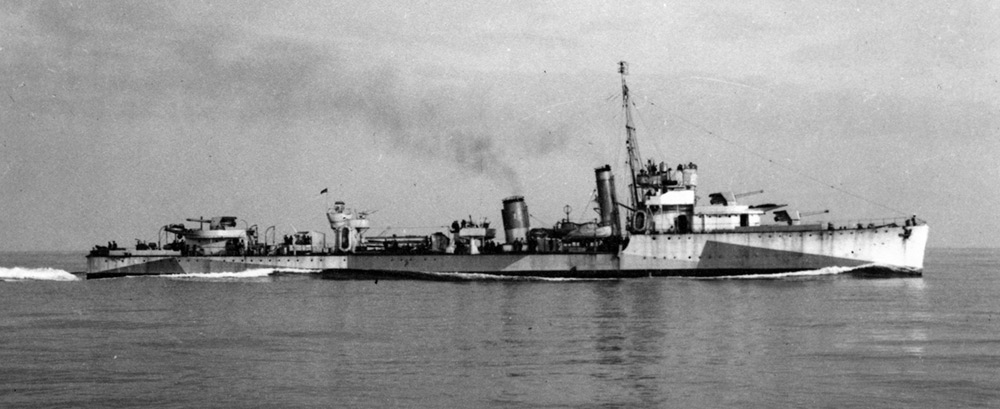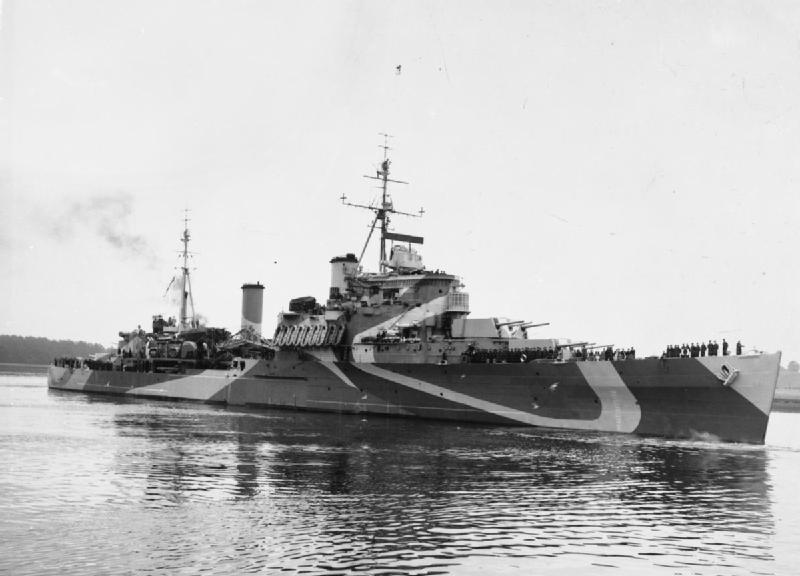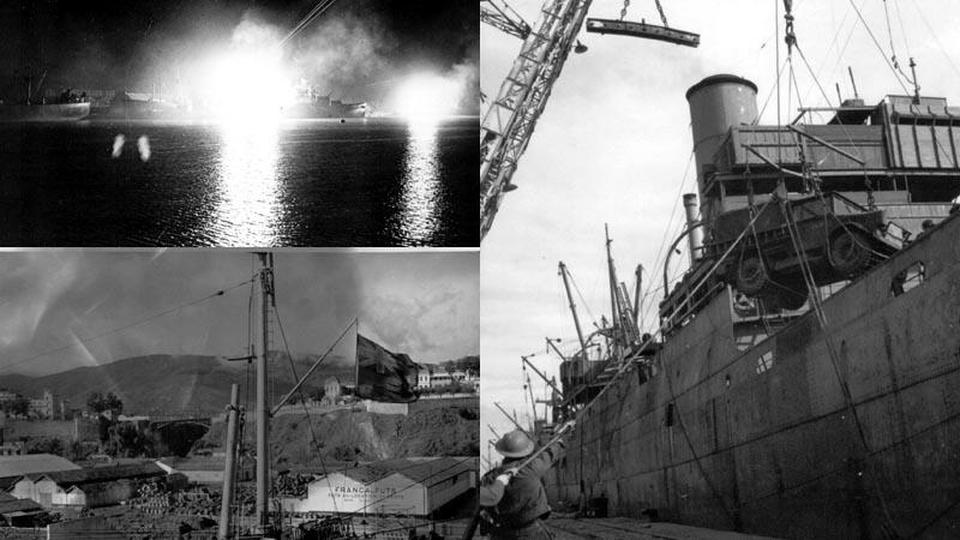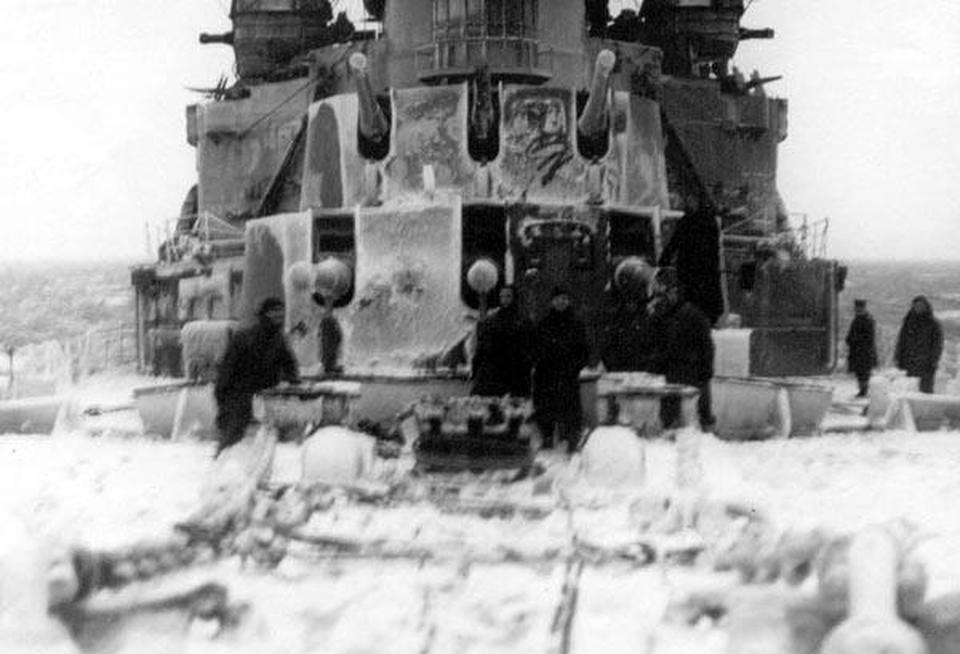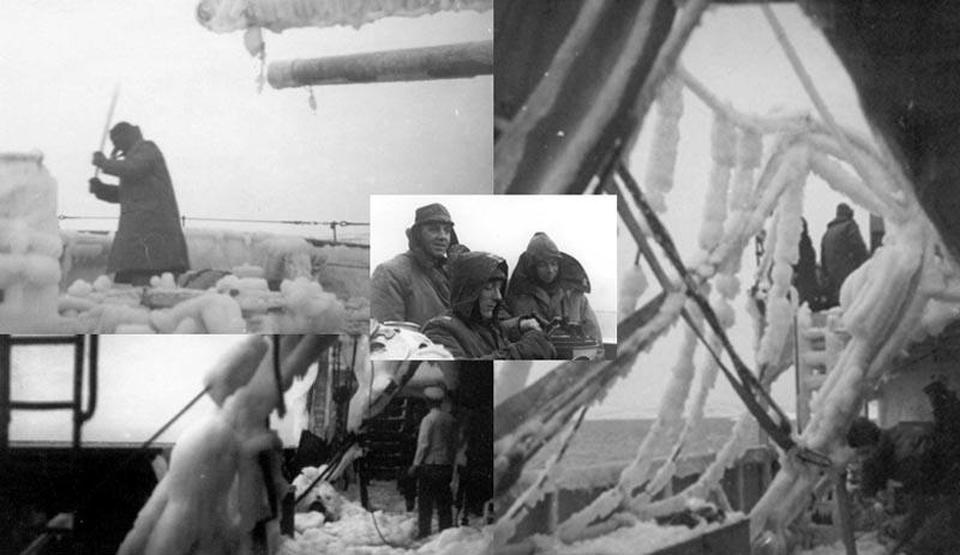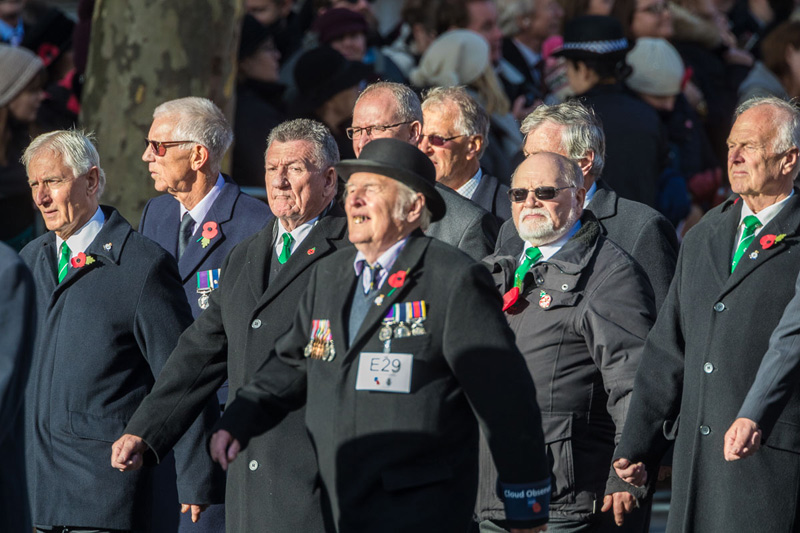






"Big Sid"
Sidney T Charles, Bosun's Mate, J104538
HMS Venomous, 1939-42
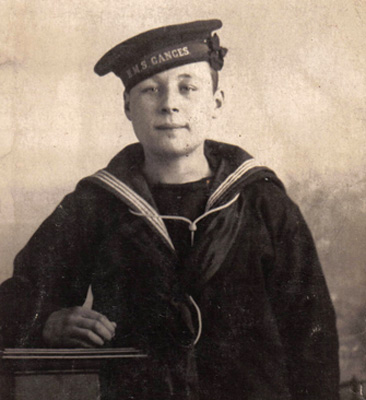
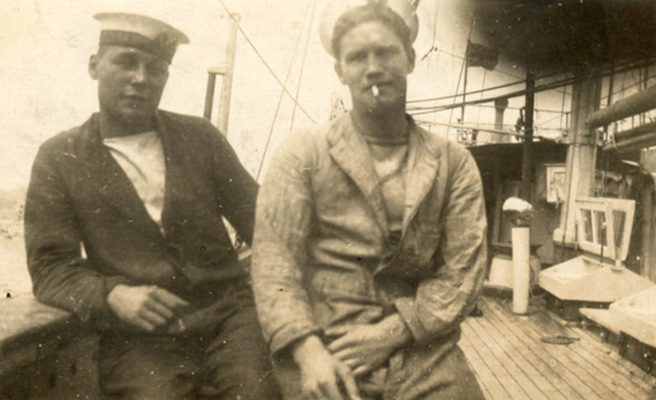 Sidney
Thomas Charles was born at Birmingham in poor circumstances on the 5
July 1906, the son of James Thomas Charles, a cobalt grinder and his
wife Beatrice Jane Sheldon, living in a Birmingham slum. Sid's father
died soon afterwards and his Mother remarried and Sid acquired a half
brother, Fred Bolton. Sid was
a "tube drawer" when he joined the Navy as a Boy sailor in
October 1921. In the studio photograph on the left he is wearing the
cap of HMS Ganges, the boys training school at Shotley, opposite Harwich at the junction of the Rivers Stour and Orwell in Suffolk.
Sidney
Thomas Charles was born at Birmingham in poor circumstances on the 5
July 1906, the son of James Thomas Charles, a cobalt grinder and his
wife Beatrice Jane Sheldon, living in a Birmingham slum. Sid's father
died soon afterwards and his Mother remarried and Sid acquired a half
brother, Fred Bolton. Sid was
a "tube drawer" when he joined the Navy as a Boy sailor in
October 1921. In the studio photograph on the left he is wearing the
cap of HMS Ganges, the boys training school at Shotley, opposite Harwich at the junction of the Rivers Stour and Orwell in Suffolk. 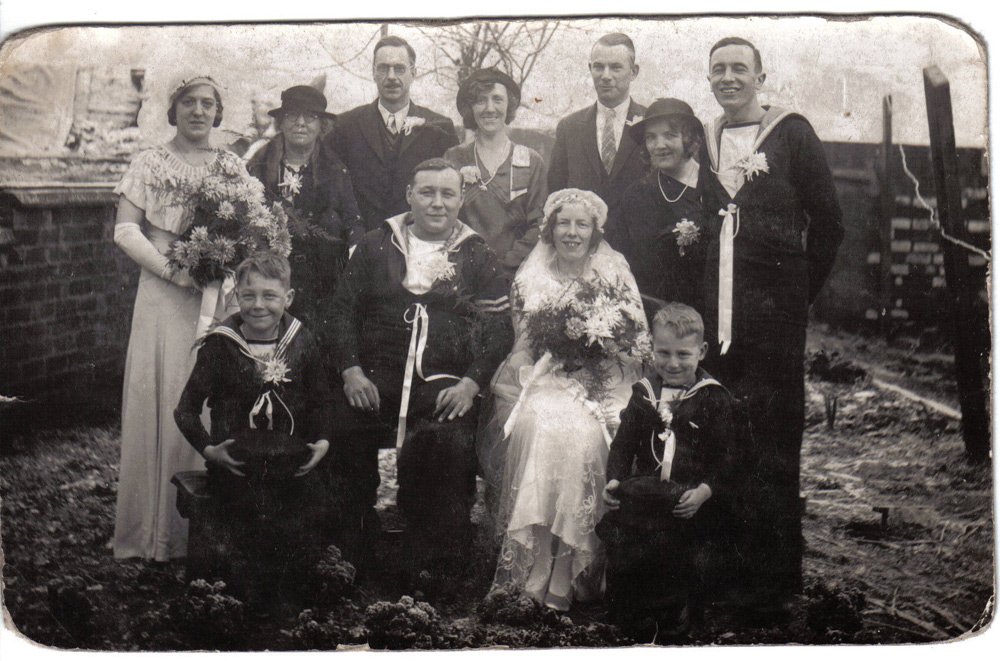
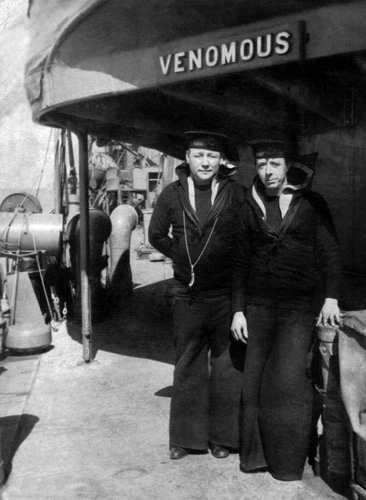 |
AB Sidney T Charles J104538
was photographed before the war as a two badegeman with eight years service (right) and with his Call hanging round his
neck on HMS Venomous.
When Teddy Weeks was washed
overboard in an Atlantic gale on 8 October 1941 his personal belongings
were auctioned to raise funds for his family in accordance with naval
tradition. George A. ("Arnie") Birkin, a gunlayer on “A” Gun, who
joined Venomous at the same
time as Teddy Weeks, made the successful bid for his bosun’s call and
his son, Malcolm Birkin, who lives in South Africa sent the photograph
below. A Bosun's mate wore his Call on a light chain round his neck and "piped" when he had a message to convey from the Quartermaster or the officer of the watch. There were certain standard "pipes" with set meanings such as "still" , a single long note used to bring hands on the upper deck to attention when saluting passing ships, and "pipe down" (eg lights out) with two high pips and a falling trill. The Call was also used for "piping the side", saluting a senior officer coming aboard or leaving. Sadly, the ability to pipe a Bosun's call in today's Navy is in rapid decline. To find out more about its use see The Boatswains Call Handbook. | 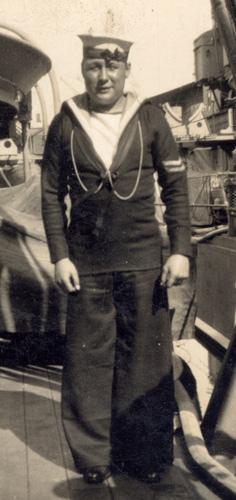 |
